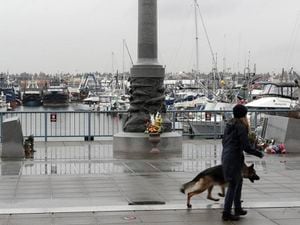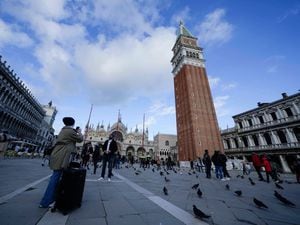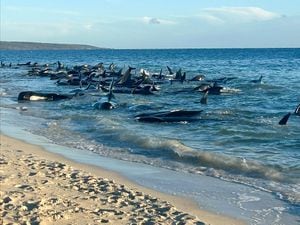Five crab fishermen presumed dead after boat sinks off Alaska
The two survivors include a man featured on the Deadliest Catch television series.

Five crab fishermen missing after their boat sank in the frigid waters off Alaska are presumed dead after authorities called off a search for those working in the one of the most dangerous industries in the US.
Two other crew members were rescued after the disaster on Tuesday, telling authorities they were the only ones who made it into a life raft, the Anchorage Daily News reported.
Dean Gribble Jr, who has appeared on the popular Discovery Channel documentary series Deadliest Catch, and colleague John Lawler suffered hypothermia but have been released from hospital.

The Coast Guard said it used helicopters, planes and a boat to look for the missing crew members for 20 hours but ended the search late on Wednesday because they were not likely to have survived.
The agency didn’t release any details on what caused the boat to sink, saying it was talking to survivors as part of the investigation.
The boat, named the Scandies Rose, was carrying a load of crabbing pots for the start of the winter season, Dan Mattsen, a partner in the vessel managed by Seattle-Based Mattsen Management, told the Seattle Times.
Crabbing boats endure perilous conditions in Alaska waters shown to their brutal full extent in Deadliest Catch. Workers face dangers including huge waves, harsh weather and massive crab pots that could crush them.

Gary Knagin of Kodiak, Alaska, the brother-in-law of the boat’s captain, Gary Cobban Jr, told The Associated Press he didn’t think the five crew members would be found alive.
“We know the risks involved in this profession, and I’m not holding out hope,” said Knagin, who worked on a crab boat for 30 years in Alaska’s Bering Sea. “I’ve seen this too many times. There’s a 13-hour window in those conditions, and they passed that.”
Also missing are the captain’s son David Lee Cobban, Arthur Ganacias, Brock Rainey and Seth Rousseau-Gano, the Coast Guard said.
The boat was travelling in an area with warnings about strong winds and heavy freezing spray, the National Weather Service said.
The vessel’s last known position before its mayday distress call was 170 miles south-west of Kodiak Island, near the southern tip of Alaska, and it sank about 10pm Tuesday, the agency said. Rescue crews arrived about 2am Wednesday and battled winds of more than 40 mph, 15- to 20-foot seas, and visibility that was limited to a mile.
The air temperature was around 12 degrees below zero Celsius, with the estimated water temperature six degrees Celsius, the weather service said.
Rescuers saw a faint light in one life raft, but a medic lowered from a helicopter found it empty, the Anchorage Daily News reported. Another faint light was spotted about a half-mile away, where searchers found the two survivors.
The men told rescuers that they were able to get into survival suits and didn’t know if the other five crew members did, the newspaper reported. The suits offer some flotation and hypothermia protection.
The National Institute for Occupational Safety and Health calls commercial fishing one of the country’s most dangerous occupations. It said there were 179 deaths in Alaska fisheries between 2000 and 2014, the most recent numbers available.
From 2010 to 2014, there were 66 vessel disasters in Alaska waters, including sinkings and fires, that killed 15 people, the agency said. Leading causes of fatal disasters were instability and being hit by large waves, it said.





